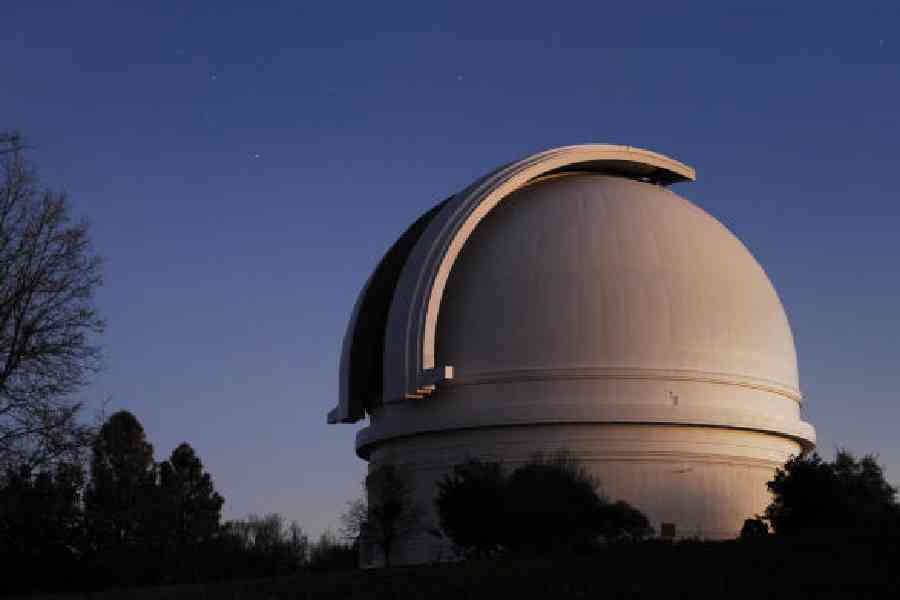If you’re about to stay up all night atop a cold mountain, to squint through an eyepiece at shimmering, impossibly distant specks of light or to stare at pixels on a screen, it helps to have eaten a good meal first.
So it was dismaying to learn recently that Palomar Observatory in Southern California, US, home to the famous 200-inch Hale Telescope — the “Big Eye” — has closed the kitchen that served elegant sit-down meals to astronomers during their observing runs. It was simply getting too expensive, the California Institute of Technology, which owns and operates Palomar, announced in May.
Thus ends one of the most endearing traditions in astronomy. From now on astronomers checking into the Monastery, the lodge where observers stay while using the telescopes on Palomar, will have to make do with frozen meals they can heat up and eat on their own.
“To me, the Monastery was (and still is for those of us who deign to, or must, travel there) the focal point of non-telescope time there,” Rebecca Oppenheimer, an astrophysicist at the American Museum of Natural History who has spent hundreds of nights on Palomar, said in an email.
“The dinners, finishing before sunset, were a marvelous tradition, expertly prepared and served, where one could meet people from all over working on different projects,” Oppenheimer added. “The cooks gave the whole thing a very special and warm atmosphere.”
The Palomar meals were a continuation of an even earlier tradition at Mount Wilson Observatory outside Pasadena. The astronomers’ dorm there, a string of plain rooms perched next to a cliff, was the original Monastery, nicknamed such because the mountain and the telescopes were off-limits to women. (One astronomer who managed to breach this limit, Margaret Burbidge, did so by posing as the assistant to her husband, Geoffrey Burbidge, who was strictly a theorist.)
Mount Wilson was the site of the 100-inch Hooker Telescope, the world’s biggest when it was finished in 1917, and the lair of Edwin Hubble, who discovered the expansion of the universe with it. He dressed and spoke like an old British lord, although he was from Missouri, and dinners in the Monastery were on the formal side — no candles, but tablecloths and cloth napkins. Whoever was using the big telescope that night sat at the head of the long table, flanked by the observers on the next-largest telescopes.
Their places were anointed by wooden napkin holders. Regular observers such as Hubble got wooden rings inscribed with their names. Newbies and graduate students made do with clothespins.
Inspired and emboldened by Hubble’s discoveries, the California Institute of Technology built the 200-inch telescope with money from the Rockefeller Foundation and collaborated with the Carnegie Institution in using it. The excitement shifted to Palomar. Its dorm, also christened the Monastery, had thick rugs and a cozy den filled with books. But the formalities of Mount Wilson faded away. No napkin rings; people sat where they wanted.
“There was no particular ceremony involved,” said Tod Lauer, a former Caltech student now at the NOIRLab in Tucson, Arizona. “Caltech was a shirttails-out kind of place that encouraged iconoclastic behaviour. There was a bell on the table to be rung to signal to the kitchen — that was about the only tradition.”
Women were allowed but scarce. Virginia Trimble, an astronomer at the University of California, Irvine, was a Caltech graduate student at the time and one of the earliest women to visit.
One night in the late 1970s, Carolyn Porco, a Caltech grad student who was later the head of the imaging team on the Cassini mission to Saturn, helped push the cowbell into history. The bell sat on the table, to be rung when the diners were ready for the next course. “I absolutely hated that damn bell,” Porco recalled. “To me it was a practice dredged up from a bygone era, redolent of wealth and privilege, snobbery and classism. I said, ‘I’ll just get up, go into the kitchen, and let them know we’re done.’”
Seated at the table was Allan Sandage, a protégé of Hubble who spent his career on the staff of the Carnegie Observatories. He noted aloud that the cowbell was a long-standing tradition. “Well, out with the old, in with the new,” Porco replied.
Sandage, who liked to introduce himself to younger astronomers as the janitor, recalled a night in the 1960s when he and an observing assistant were sitting in the Monastery library waiting for Rudolph Minkowski, an astronomer at Caltech, to come down from the 200-inch Hale telescope. Minkowski was retiring and had spent the last two nights of his career peering at a faint speck in the sky called 3C 295.
At last he came bounding down the stairs and into the library with a bottle of bourbon and three glasses. He had succeeded in recording a spectrum of light indicating that 3C 295 was the most distant object then known in the universe: a galaxy almost 5 billion light-years away, fleeing from us at almost half the speed of light. Minkowski had gone out in a blaze of glory.
“Way leads onto way,” Lauer said. “And any good department of astronomers will always find a new way to sit everyone down together and talk about whatever, with the expectation that it will lead to something.”
NYTNS










